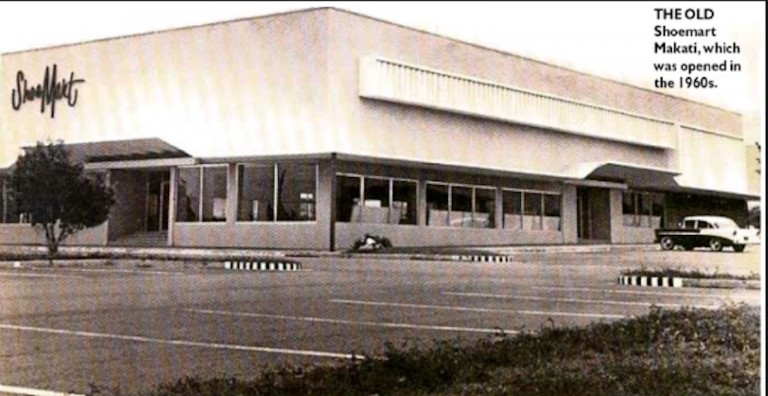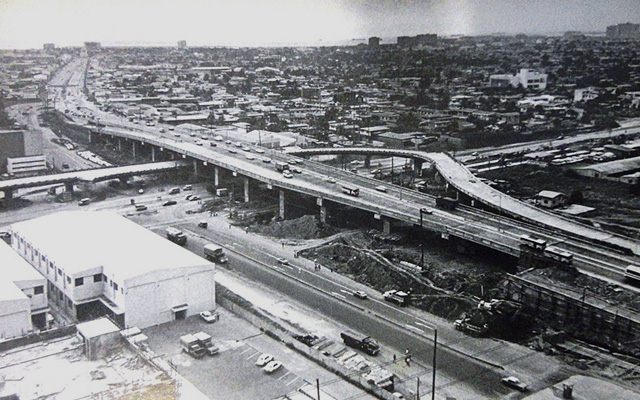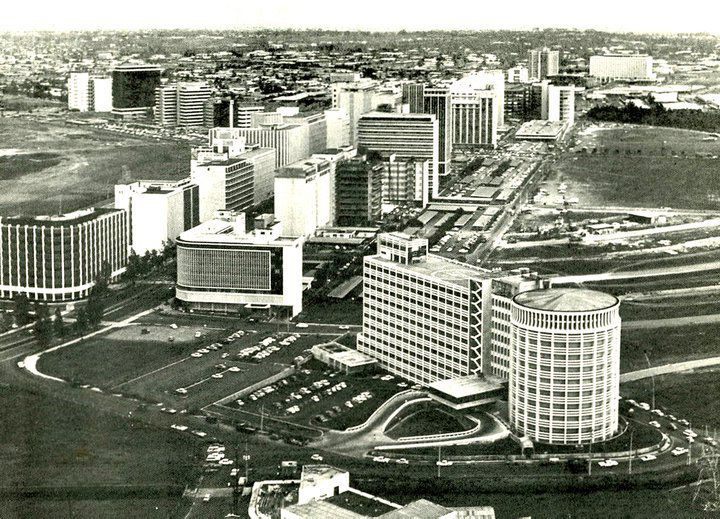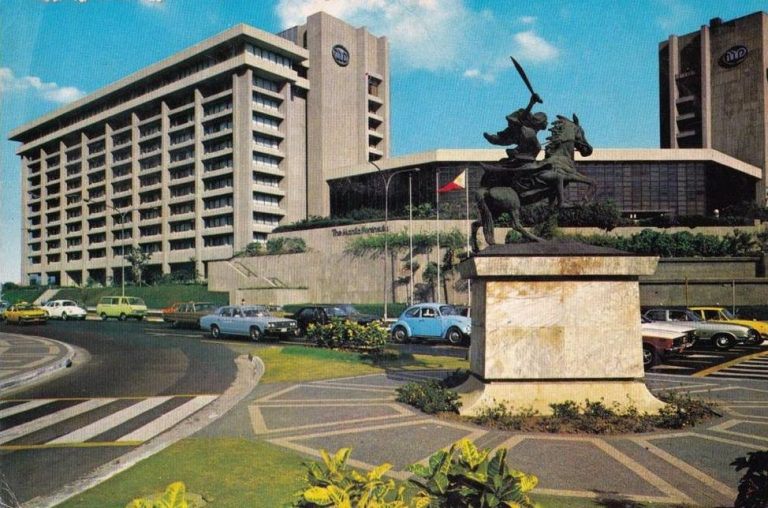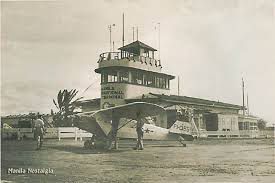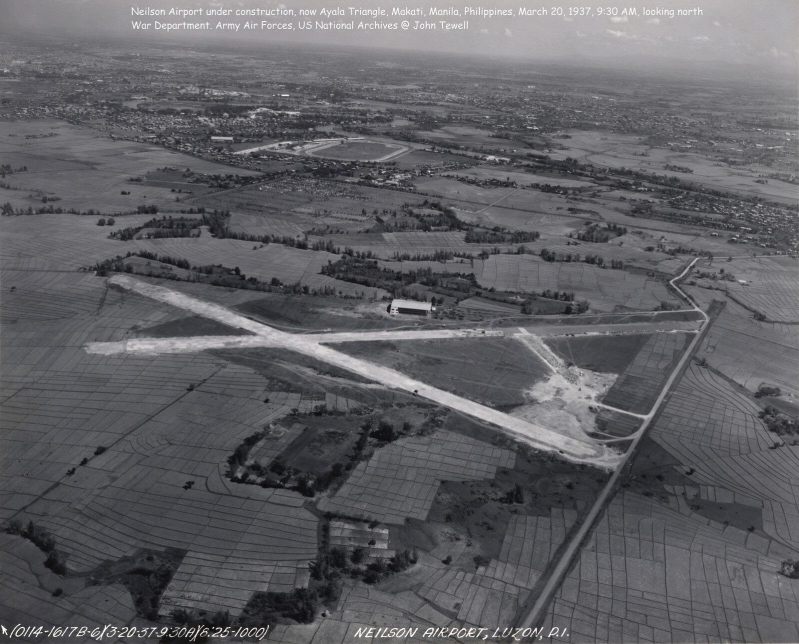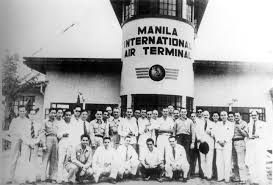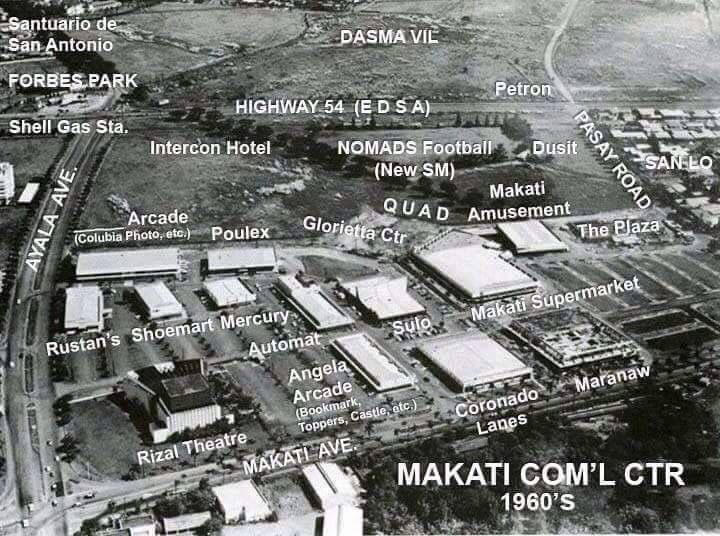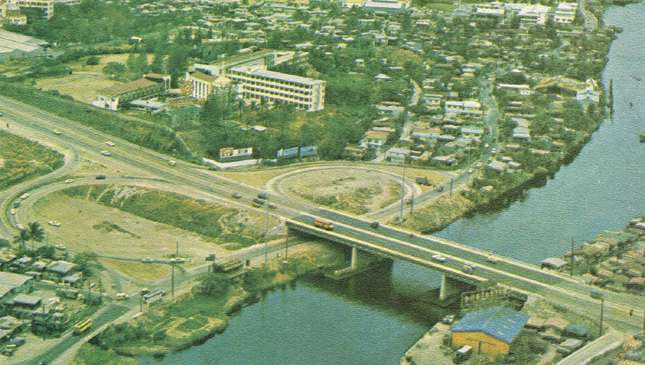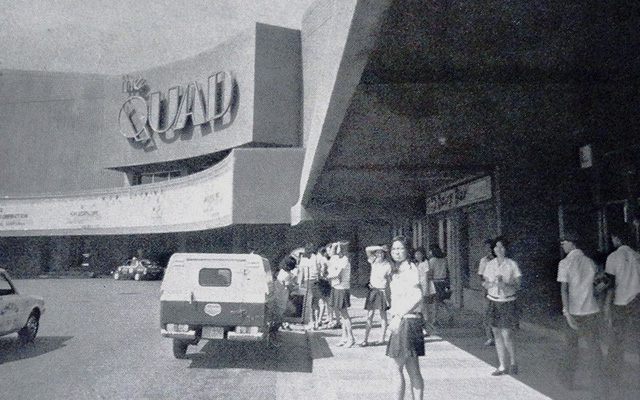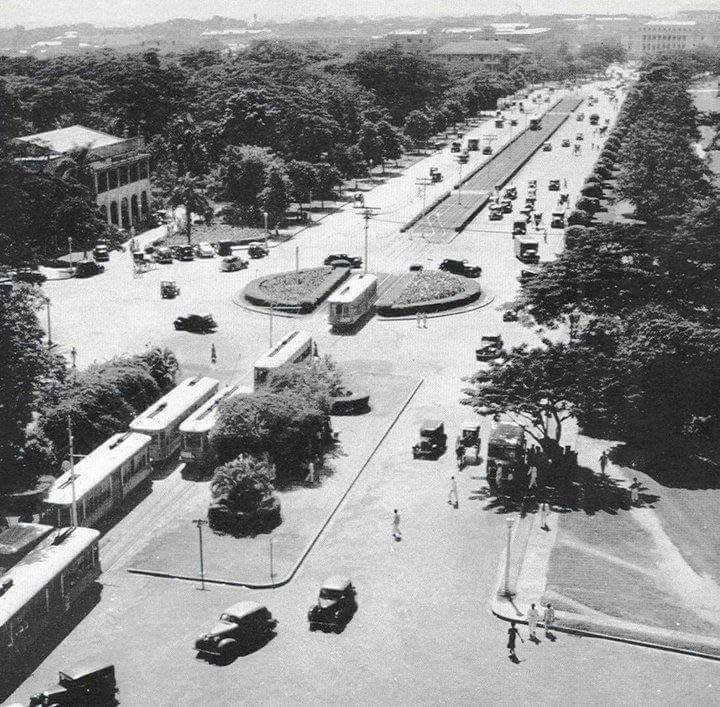Barangay San Lorenzo (BSL) belongs to the 1st congressional district of Makati and is included under Cluster 1 or Central Cluster. It is considered as one of the richest barangays in the Philippines for embracing part of the Central Business District from where its revenue mainly comes from. BSL has a total land area of 1,734,100 square meters with a population of 12,995. The population density of Barangay San Lorenzo is 7 persons per 1,000 square meters.
Pre-war period
Downtown Makati started out as part of the wide municipality ofSanta Ana de Sapa (part of the City of Manila today) and became a town of its own in 1670, then as San Pedro de Macati in honor of its patron, Saint Peter. In 1851, Don José Bonifacio Roxas (a member of the Ayala-Roxas family) purchased the farm estate of "Hacienda San Pedro de Macati" from the Jesuits for 52,800 pesos. The western portion of the estate is now what is called the downtown. Since then, Makati and its development remain close to the Zobel de Ayala family.
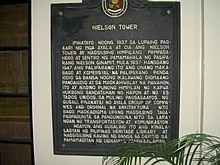
In the 1930s, the first airport in Luzon island, Nielson Field, opened in what is now the Ayala Triangle within the hacienda. The airport was officially inaugurated in 1938, and Philippine Airlines began its operations there in 1941.
The tracks of what is now the Philippine National Railways reached the town very early in the decade, which is located at the western portion of the downtown at present, with three stations serving commuters and residents.
Postwar period
After the destruction of World War II that brought upon Makati, the town grew rapidly, and real estate values boomed. As Nielson Field closed down in 1948 the plan was set for the building of the central business district. The first centrally planned communities from the Ayalas' farm estate were established in the 1950s. And some of the gated communities (Urdaneta, San Lorenzo San Antonio and Bel-Air Villages) that were developed grew into commercial areas and office parks.
The multiple-lane Ayala Avenue was completed in 1958, which once part of the runway of the first commercial airport in the country, the Nielson Airport. The downtown was developed into high density residential and commercial areas according to specific zoning regulations.
In the early 1960s, Ayala Corporation commissioned some of the first high-rise buildings to rise along Ayala Avenue from one of the country's best known architects, Leandro V. Locsin.
The Makati Stock Exchange (MkSE) was established on May 27, 1963 with its trading area located along Ayala Avenue in downtown. Although both the MSE (Manila Stock Exchange) and the MkSE traded the same stocks of the same companies, the bourses were separate stock exchanges for nearly 30 years until December 23, 1992, when both exchanges were unified to become the present-day Philippine Stock Exchange.
Downtown Makati has been the financial capital of the Philippines since the late 1960s, owing to congestion, relative lack of expansion area, that downtown Manila being almost fully built up, higher land prices & taxes and urban decay in Manila. The downtown district rapidly developed during the terms of town mayors Maximo Estrella, Rafael Bañola and Jose Luciano, who encouraged the massive development of the town and welcomed foreign and local investors to what was tagged as the nation's number one municipality at that time. Bañola's mayorship saw the building of the Ayala Center complex in the mid 1960s.
Martial Law era
In 1972, Ferdinand Marcos imposed Martial law in the Philippines. The formal announcement of the proclamation was made in the evening of September 23. But the economic activity in the downtown was still ongoing, with Nemesio Yabut as the then town mayor, preparing the district for Makati's full integration as a part of the new region of Metro Manila (the National Capital Region officially) and as a founding member of the Metropolitan Manila Commission, which it achieved with the commission's formal establishment on November 7, 1975, ending Makati's many years as a town under Rizal Province.
1980s
Following the assassination of Ninoy Aquino in 1983, the downtown area was one of the many places of rallies and mass demonstrations that were the basis of the People Power Revolution against the dictatorship of then-President Marcos in 1986. It was that decade that witnessed the emergence of a so-called moderate opposition, with the Makati Business Club, against Marcos' ailing authoritarian regime.[6] Established in 1980, the MBC, a union of executives from business entities operating in the district, was then a voice of opposition to the dictatorship, and it was one of the leading organizers of what was then dubbed the Confetti Revolution, so-named due to the yellow confetti from torn phone directories thrown along Ayala Avenue from the buildings in the wide road, whenever the rallies would happen.
After the death of Mayor Nemesio Yabut during the People Power Revolution, Corazon Aquino, Ninoy's widow and the country's first female president, appointed Jejomar Binay as the acting mayor of the town of Makati and was elected as mayor in 1988. Having spent his childhood in the municipality and himself a veteran of the Confetti Revolution and of the opposition activities during the Marcos administration, his first term bore witness to the events of the coup d'état attempt in December 1989, which hit the district directly.
1990s
In the 1990s, the country's first skyscrapers started to rise here in the business district. The country's first skyscrapers that rose in the downtown are the Pacific Star Building, The Peak Tower, Pacific Plaza, and the Rufino Pacific Tower.
By virtue of Republic Act 7854, passed by Congress in late December 1994 and signed into law by President Fidel V. Ramos on January 2, 1995, became the City of Makati. On February 4, 1995, the character of the new city was ratified in a plebiscite with 91% of voters in favor of cityhood. The whole people of Makati especially the businessmen in downtown celebrated the remarkable event.
21st century
In the early 2000s, the downtown was a primary target of political rallies and terrorist attacks.
On May 17, 2000 at 5:02 p.m., Glorietta inside Ayala Center was bombed injuring 12 persons, mostly teenagers. According to local authorities, the homemade bomb was placed in front of a toilet beside a video arcade. It was said to be the precursor of the May 21, 2000 SM Megamall bombing and the December 30, 2000 Rizal Day bombings.
From August 2000 to January 2001, a wave of protests against the former president Joseph Estrada happened in the district. The anti-Estrada protests in Makati focused on Ayala Avenue, which cuts from EDSA to Buendia (now Gil Puyat Avenue).
In 2003, The Oakwood mutiny took place in the Oakwood Premier (now Ascott Makati), within the Glorietta complex, and on 2007, the Manila Peninsula siege took place at The Peninsula Manila. Bith happened at the Makati CBD to call for former president Gloria Macapagal Arroyo to step down.
The 2007 Glorietta explosion ripped through the Glorietta 2 on October 19, 2007. The death toll in the explosion was 11, while 120 were injured. Although there were conflicting reports as to the cause, it was concluded that the explosion was caused by a faulty liquefied petroleum gas tank located in a Chinese restaurant.
In 2011, the Occupy Wall Street movement protesting economic inequality and the power of United States financial institutions, spread from New York City to other parts of the world, including the Philippines. The movement's supporters' first action was held on October 14, when protesters marched in Makati City from the Ninoy Aquino monument on Ayala Avenue to the American Chamber of Commerce. The movement here in the country is called "Occupy Philippines", which has other protests held in the US Embassy and Rizal Park in Manila after the protest in Makati.

Source: Makati Central Business District
San Lorenzo Village
The village of San Lorenzo, a gated enclave residential subdivision was established in June 1954 by the Ayala Corporation. The village is the primary component of Barangay San Lorenzo, one of the richest barangays in the country.
It is bounded in the north by the portions of Barangays San Antonio and Bel – Air Village, in the northeast by portions of Barangay Bel – Air and Urdaneta, in the east by Barangay Forbes Park, in the west by portions of Barangays Bangkal and Pio Del Pilar and in the south by Dasmarinas Village.
The village occupies sixty-three (63) hectares of prime real estate properties and has in its midst, one of the largest private leisure parks in the city. One will notice that the construction of houses within the subdivision is a blend of the old and modern style of architecture.
The residents comprise the mixture of international and cosmopolitan type of community and likewise the who’s who of the new mainstream and old elite society. Notwithstanding, it is also the residential area of expatriates of leading multi-national corporations.
As strategically located in the heart of the city’s Central Business District, it sets the village to be accessible to the major financial institutions such as Bank of the Philippine Islands Head Office and Allied Bank Head Office. And to the premier business offices such as the Philippine Stock Exchange and the Philippine Long Distance Telephone Company situated along the main thoroughfare, the Ayala Avenue.
The proximity of the village to Ayala Center, the country’s biggest commercial shopping center makes travelling just a walking distance such a breeze and convenient to elderly or seniors. The Ayala Center houses major department stores, convenience and lifestyle retail outlets and cinemas.
Just like the Bel – Air Village, the San Lorenzo Village Association follows the strict code of deed of restrictions. The village strives to live up to its reputation as an orderly neighborhood adhering to the high standards and environment conscious quality of living and also in accordance to the zoning regulations of the city government.
Legazpi Village
Legazpi Village is a business village built by the Ayala Corporation within the Makati Central Business District. Originally a residential village in Barangay San Lorenzo, it is named after Miguel Lopez de Legazpi, a Spanish conquistador who became the Spanish East Indies's (present-day Philippines) first Governor-General under Spanish rule.
Legazpi Village is known for the outdoor Legazpi Sunday Market, selling organic produce, artisanal crafts, and street food including grilled meats and fried noodles. Hip taco spots and brunch cafes sit alongside upscale Filipino restaurants, while speakeasy lounges and cocktail bars have an easygoing vibe. Green parks like Legazpi Active and Washington SyCip are popular with joggers and dog walkers.
A haven for young professionals. It is the hipper and more laid-back neighborhood in the Makati Central Business District. Although it houses many offices and is near main thoroughfares, it is popular for its less crowded tree-lined streets, pocket gardens, and cafés and restaurants where foodies whet their palate. Despite it being slightly older than its neighbor, Salcedo Village, it notably attracts the younger population as it is nearby hangout spots. Also, it is where top executives reside, work, and have fun.
Stereotypically, people in the Makati CBD are permanently on the rush but, the calm vibe of Legaspi Village is a reminder to slow down. From cafés offering artisanal drinks, under-the-radar restaurants serving delectable cuisines, jolly jeeps serving affordable yet delicious food employees love (the famous Sisig at Rada St. is a must try!), to urban gardens where residents jog, do yoga, walk their pet, and saunter, Legaspi Village is an easygoing community where the usual fast-paced setting of Makati is nonexistent.
Perfect for those who seek an unhurried life in the metro
Residents and those who work in Legaspi Village never worry about the insane rush hour traffic and crowd. A retreat in the middle of the busy Makati CBD, it is a go-to place even for those who live nearby to unwind after a long day. Its overall unhurried setting is an invitation to relax, meet friends to relish great food in hip restaurants, and enjoy a leisurely stroll or exercise in the park.
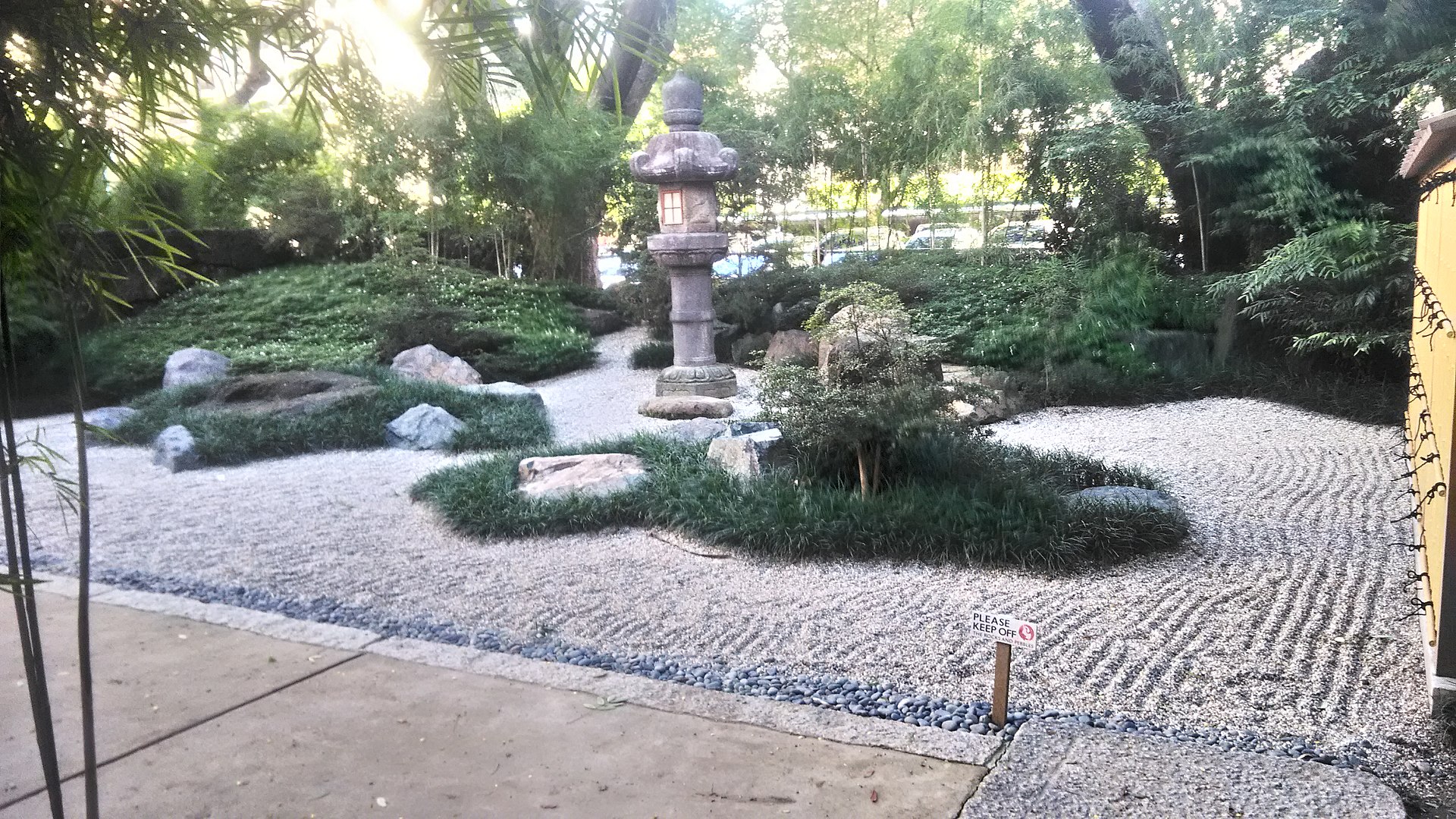 Zen Garden or Japanese rock garden at the Tsuruki En (鶴亀園) or the Crane and Turtle Garden at the Washington SyCip Park
Zen Garden or Japanese rock garden at the Tsuruki En (鶴亀園) or the Crane and Turtle Garden at the Washington SyCip Park


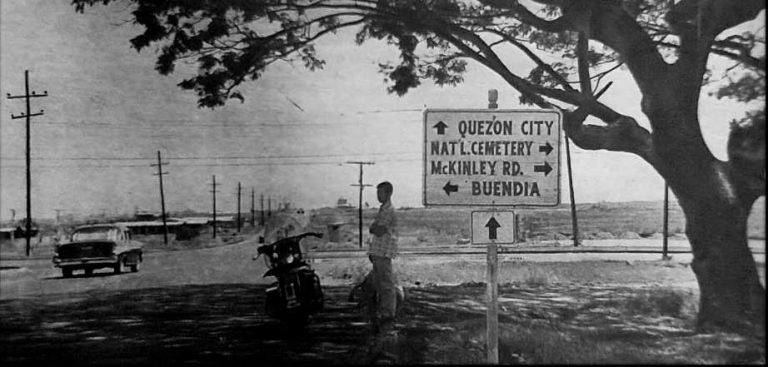 EDSA - BUENDIA crossing
EDSA - BUENDIA crossing